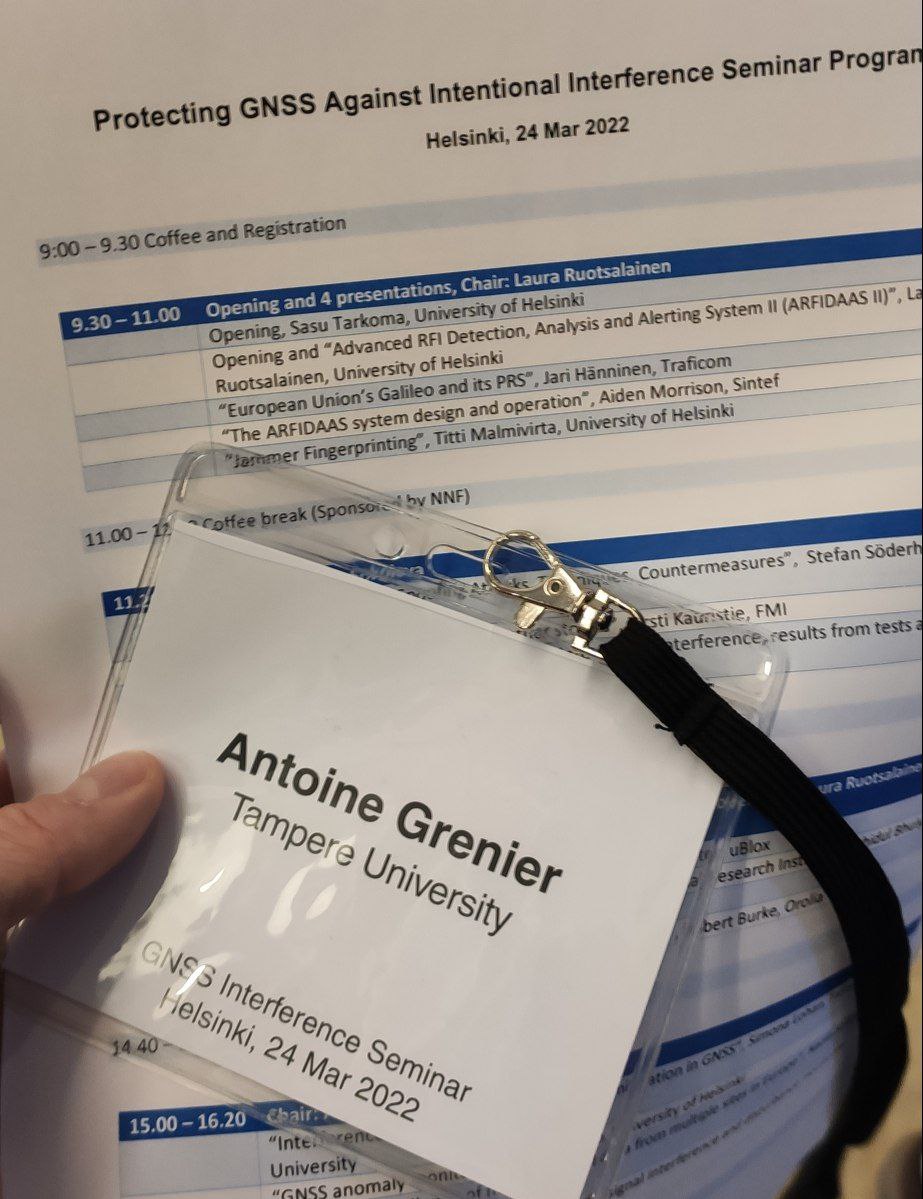Interferences of GNSS signals have always been a threat to satellite positioning. It is usually divided into two categories: unintentional interference due to signals sharing similar bands (e.g., RADAR); and intentional interference, referring to purposely sending a signal to disrupt the positioning of a receiver. The latter category was once only the concern of military-grade receivers, but nowadays, one can access GNSS jammers for only $15 [1]. While the intentions are not necessarily malicious (sometimes used to de-activate company cars trackers), jamming this part of the radio spectrum is illegal and should be controlled.
Intentional interference divides again into two techniques: jamming, where a signal with a higher power is used to scramble the low-power GNSS signals; spoofing, where a signal with false data inside is used to fool the receiver. Evidently, spoofing is much harder to perform than jamming, as was highlighted during the presentation from Stefan Soderholm (Septentrio). Yet nowadays, Software Defined Radio projects and the reduced price of electronics allow its easy access to malicious people. Several GNSS companies were present during the conference, namely UBlox, Septentrio, and Orelia. Each of them proposed their solutions to face this in-coming threat.
To understand the number of events already happening, several research teams presented their research on interference. Laura Ruotsalainen (Helsinki University), Aiden Morrison (Sintef), Titti Malmivirta (Helsinki University) and Nadia Sokolova (Sintef) reviewed their work in the ARFIDAAS II project. It aims for a low-cost monitoring solution that could be decimated throughout a country to discover intentional interference sources. The system is composed of an in-house radio front end, which acquires the data and sends it to a Cloud server for processing. By implementing it in several countries (e.g., Finland, Sweden, Netherlands), they highlighted thousands of such events. They have now composed a database of more than 10 TB of data that they want to propose as open-source datasets to help researchers worldwide on these challenges.
 Furthermore, the research team’s fingerprinting of the device using this database and Machine Learning techniques is under review. Kirsti Kauristie from the Finnish Meteorological Institute (FMI) also reviewed how such a network could also help research on space weather storms like solar eruptions, which can be viewed as a case of unintentional interferences.
Furthermore, the research team’s fingerprinting of the device using this database and Machine Learning techniques is under review. Kirsti Kauristie from the Finnish Meteorological Institute (FMI) also reviewed how such a network could also help research on space weather storms like solar eruptions, which can be viewed as a case of unintentional interferences.
Finally, Kibrom Ebuy Abraha (Lantmäteriet) showed how the national GNSS network from Sweden (SWEPOS) could be used to monitor interference sources. Contrary to the ARFIDAAS II, the discovery of events is based on post-correlations measurements, i.e., SNR values. They also identified hundreds of such events over the whole country.
This conference has proven very interesting to highlight the current state-of-the-art interference identification and mitigation techniques. It also showed the importance of international collaboration to constitute reference datasets and open-source code, going toward an interference-proof receiver.
[1] Schmidt (2016) A Survey and Analysis of the GNSS Spoofing Threat and Countermeasures. ACM Computing Surveys.

